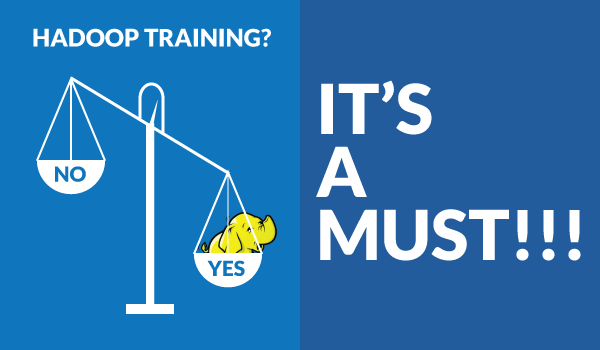Hadoop is a data management system that strikes at the root of resource-gobbling processes. More than half a decade old, Hadoop was created to help Internet-based organizations deal with their huge amounts of data. Today, it has become a common name in the big data world.
For one, Hadoop training simply makes analyst’s life better. Two, it saves money. Well, if those two aren’t enough for anyone to grab this technology, nothing else is.
So, let’s take a look at what makes Hadoop so popular:
1. Moving high data volumes: Traditional database structures cannot handle big data. To absorb and analyze the scale of data that is generated in the present times, open source Hadoop is the most cost-effective technology that you can have. It will take care of unstructured, semi-structured, and structured data – everything that you can think of dumping in a data lake.
2. Offloading ETL processes: ETL (Extract, Transform and Load) workloads are low and value and demand great processing resources (not to mention great time), even more so in the face of big data. Moreover, new types of data can’t be easily captured and used. With Hadoop, data is loaded into it, and the aggregation, transformation and analysis happens within it. Data latency comes down to minutes. There is no expenditure on ETL hardware or software licenses.
3. Enriching existing data architectures: Typical Enterprise Data Warehouses don’t support new data types, which limits opportunities to create value. As Hadoop works on the schema-on-read structure, its flexibility helps in tapping the under-utilized potential of such unused or new data. As a result of the refinement of these data, analytics as well as reporting is enriched.
And that’s not all. Here are some more amazing factors.
1. Fault-tolerance: As data is replicated across clusters, even if there is a failure at several individual nodes while running a query, recovery can be easily done in the face of a disk, node, or crack failure. The result? Nearly zero loss of data.
2. Flexibility: With Hadoop, you can make use of structured as well as unstructured data. So those data that were too expensive for a business to store and use can be used at cost-effective prices with this technology.
3. Scalability: A major problem with most traditional RDBMS (Relational Database Management Systems) is that they cannot scale up when the volume increases. Hadoop has this covered with its distributive capacity. Since hundreds of inexpensive servers operating in parallel, it is possible to distribute large data sets at low monetary rates.
This flexible, cost-effective system has changed the way analytics works, which in turn has given rise to a multitude of solutions and possibilities across sectors – be it finance, government, healthcare, information services, media and entertainment, retail, or other industries with big data requirements. And all that comes with reduction in costs.
Do you know any more reasons to love Hadoop that we have not mentioned here? Share in the comments section.


